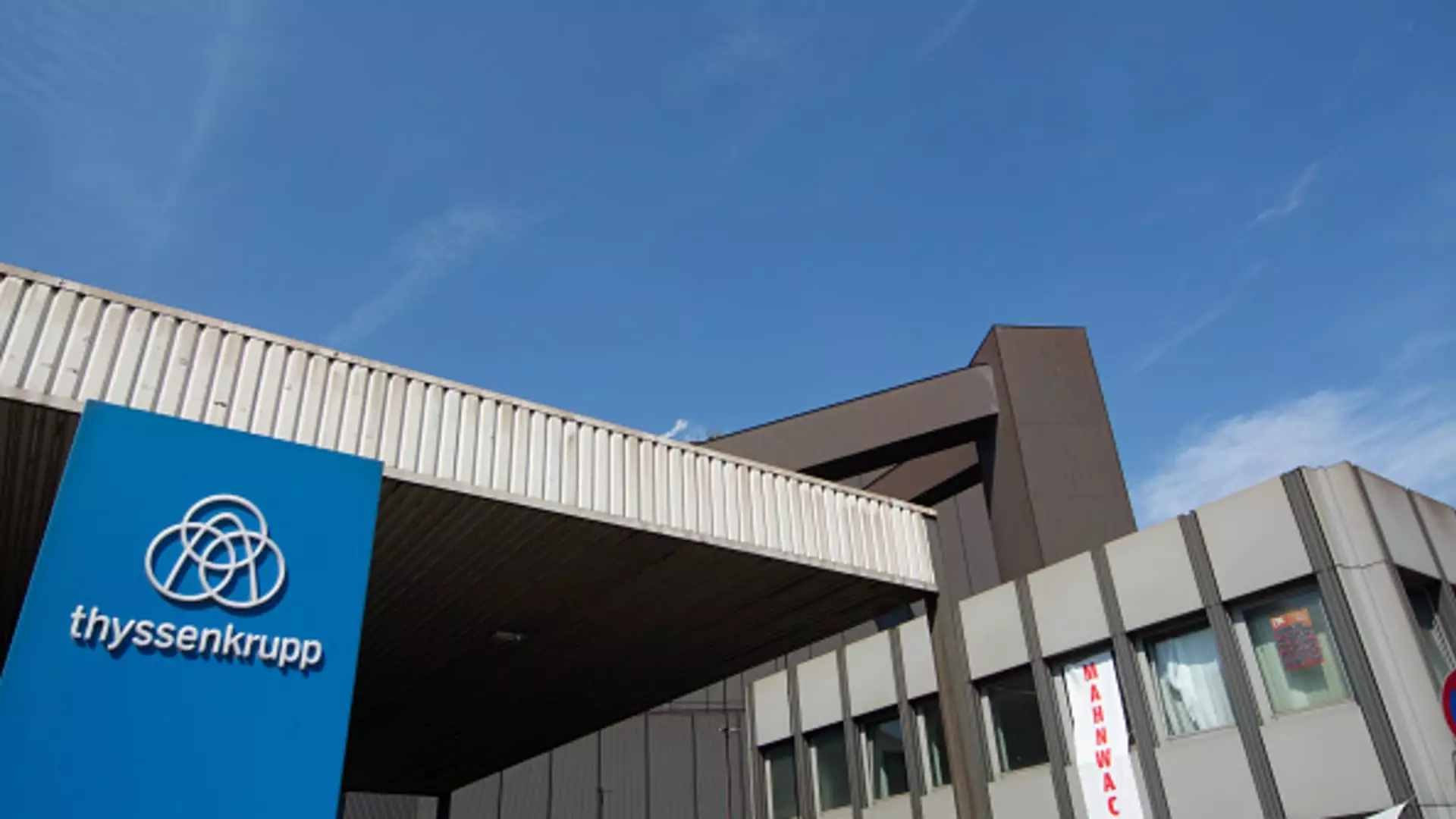In an era marked by economic turbulence, Thyssenkrupp has made strides in reducing its financial losses, as demonstrated by their latest quarterly results, which revealed a narrowed net loss. Despite this accomplishment, the firm still grapples with significant challenges, primarily stemming from its beleaguered Steel Europe division. On a recent Tuesday, Thyssenkrupp’s shares surged by nearly 8%, signaling investors’ cautious optimism after the company’s announcement of a 1-billion-euro impairment related to its steel operations. This price increase reflects broader market sentiment that favors operational stabilization despite underlying issues.
Thyssenkrupp’s fourth-quarter results presented adjusted earnings before interest and taxes (EBIT) of 151 million euros, surpassing the Visible Alpha consensus projection of 120 million euros. This outperformance is crucial as it indicates an ability to generate profit even amidst extensive asset impairments. For the fiscal year that ended on September 30, the company’s net loss drastically decreased to 1.5 billion euros, a substantial improvement from the previous year’s 2 billion euro loss after accounting for minority interest. However, the 1.2 billion euros in asset impairments underscore the persistent difficulties encountered in the firm’s operations, particularly within its steel division.
In the wake of the costs incurred, CEO Miguel Lopez emphasized the critical decisions facing Thyssenkrupp in the upcoming fiscal year, highlighting a strategic pivot for both the Steel Europe and Marine Systems sectors. His statement suggests a proactive approach to addressing the company’s challenges, alongside a commitment to harnessing opportunities tied to the green transformation of the industrial sector. This commitment is particularly noteworthy in light of the growing global emphasis on sustainability, which could serve as a catalyst for Thyssenkrupp’s long-term viability and competitiveness.
Part of the company’s restructuring efforts includes the transition of Steel Europe into an independent entity. This strategic move could grant the division greater flexibility in responding to market dynamics. The recent sale of a 20% stake to EP Corporate Group showcases Thyssenkrupp’s initiative to engage dynamic partnerships for growth. Furthermore, negotiations regarding a potential 50:50 joint venture underscore a methodical expansion strategy that aims to stabilize the steel division while addressing broader market uncertainties.
The financial landscape in which Thyssenkrupp operates is complicated by external factors such as political upheaval and diminishing global demand for industrial goods, particularly affecting Germany’s export-driven economy. With business activity plummeting to a seven-month low and internal political conflicts arising within the ruling coalition, the environment remains precarious. Thyssenkrupp, positioned as a key player within the German industrial sector, must adapt to these shifting circumstances while maintaining its focus on improving operational efficiency across all business lines.
Thyssenkrupp’s journey illustrates the delicate balance between navigating financial adversity and pursuing strategic growth. As the company intensifies its focus on future opportunities and organizational restructuring, the impending fiscal year stands as a pivotal moment. While challenges abound, the recent uptick in investor confidence may serve as an indicator that Thyssenkrupp is on the path to recovery, albeit with many hurdles yet to overcome.

